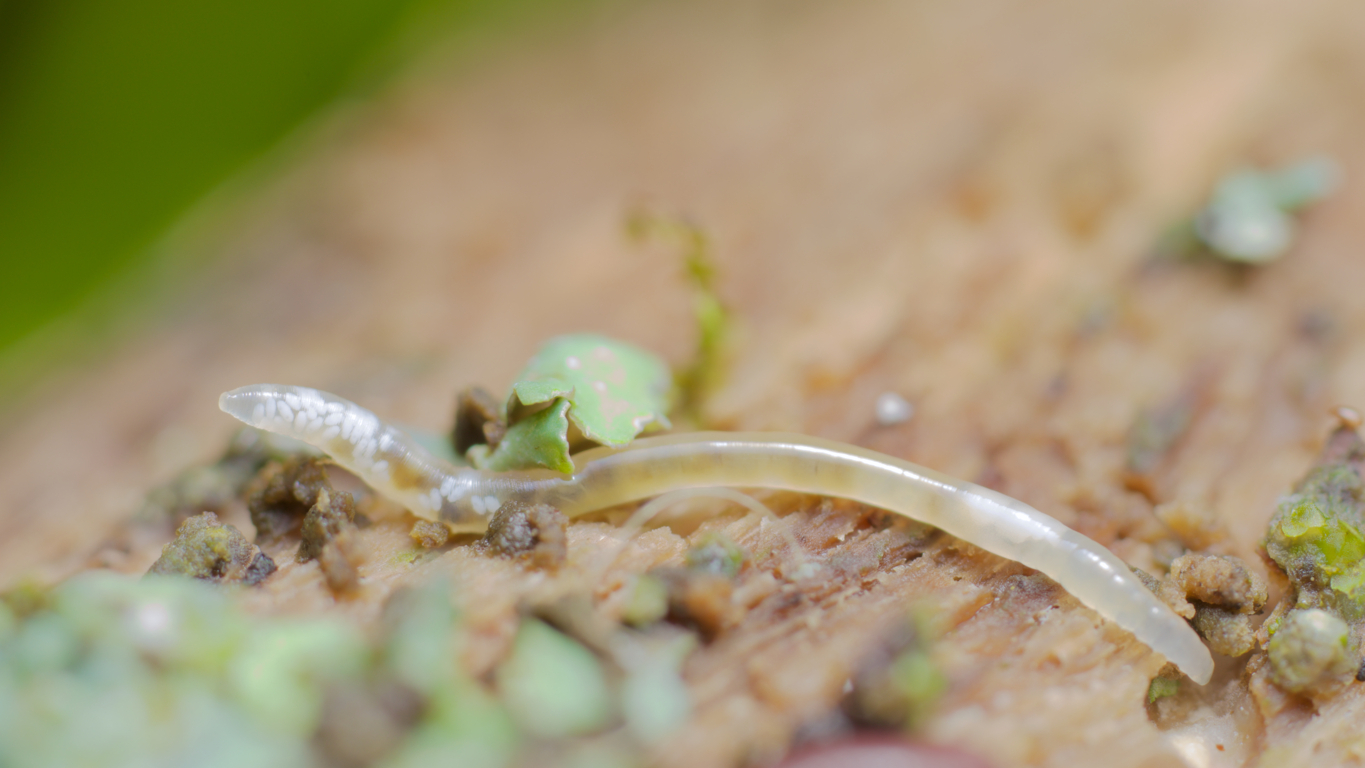
Enchytraeids
Enchytraeidae is a family of segmented worms (annelids), similar and closely related to the earthworms, but smaller and usually whitish in colour. With a body length of about 2 to 20 mm they belong to the soil mesofauna. Enchytraeids ("potworms") occur in almost all non-arid soils worldwide. Some of the c. 780 known species are aquatic but the majority are soil-dwelling. The European fauna is comparatively well-known[1] and here between 5 to 25 species are found at a site, and usually between 1000 and 100.000 specimens per square meter.
Like earthworms, enchytraeids are soft-bodied burrowers and they ingest soil and digest organic compounds: bacteria, fungi, dead organic matter, or plant root exudates. There are no pests, predators or parasites. By their burrowing and feeding activity, enchytraeids improve soil quality in terms of water infiltration, aeration, soil structure, and microbial growth. Hence, their function in soil is similar to that of earthworms, only at a smaller scale.
Species differ in their preferences for certain soil textures, humus forms, and for ranges of pH, moisture and salinity. These differences are well-documented for many European species[2]. Species assemblages react sensitively to changes in these parameters and also to management practices[3], which is the basis for their use as indicators of soil quality.
Methods to obtain and to identify specimens are standardized[1],[4] and include extraction devices that allow to obtain living specimens for microscopical study. Modern DNA-based tools to identify species assemblages are currently on the way[5].

Text by dr. Rüdiger Schmelz, IFAB Institut für Angewandte Bodenbiologie
[1] Schmelz RM & Collado R. 2010. A guide to European terrestrial and freshwater species of Enchytraeidae (Oligochaeta). Soil Organisms 82: 1-176.
[2] Graefe U & Schmelz RM. 1999. Indicator values, strategy types and life forms of terrestrial Enchytraeidae and other microannelids. In: R. M. Schmelz & K. Sühlo (Eds), Newsletter on Enchytraeidae No. 6. Universitätsverlag Rasch, Osnabrück, Germany, pp. 59-67.
[3] Pelosi C & Roembke J. 2018. Enchytraeids as bioindicators of land use and management. Applied Soil Ecology, 123: 775-779.
[4] ISO, International Standard Organization. 2006. Soil Quality - Sampling of Soil Invertebrates Part 3: Sampling and Soil Extraction of Enchytraeids, 12 pp.
[5] Jänsch S et al. 2019. Determination of soil invertebrate diversity using morphological and DNA-based methods at 25 sites in Germany: first experiences. Poster at SETAC Europe Special Science Symposium Nov 2019 Brussels, Belgium.
